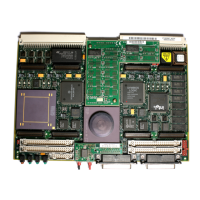Entering and Debugging Programs
4-9
4
For additional information about the offset registers, refer to the
Debugging Package for Motorola 68K CISC CPUs User's Manual.
Port Numbers
Some 162Bug commands give you the option to choose the port to
be used to input or output. Valid port numbers which may be used
for these commands are as follows:
1. MVME162 EIA-232-D Debug (Terminal Port 0 or 00) (Port 1
on the MVME162LX J17 front panel connector). Sometimes
known as the ‘‘console port’’, it is used for interactive user
input/output by default.
2. MVME162 EIA-232-D (Terminal Port 1 or 01) (Port 2 on the
MVME162LX J17 front panel connector). Sometimes known
as the ‘‘host port’’, this is the default for downloading,
uploading, concurrent mode, and transparent modes.
3. MVME162 EIA-232-D (Terminal Ports 2 or 02 and 3 or 03)
(Port 3 and Port 4 on the MVME162LX J17 front panel
connector). Additional serial ports available.
Note These logical port numbers (0, 1, 2, and 3) are shown in
the pinouts of the MVME162LX module as SERIAL
PORT 1, SERIAL PORT 2, SERIAL PORT 3, and
SERIAL PORT 4, respectively. Physically, they are all
part of the front panel 8-pin RJ-45 connectors on J17.
Entering and Debugging Programs
There are various ways to enter a user program into system
memory for execution:
❏ Create the program with the assembler/disassembler
❏ Download an S-record object file
❏ Read the program from disk

